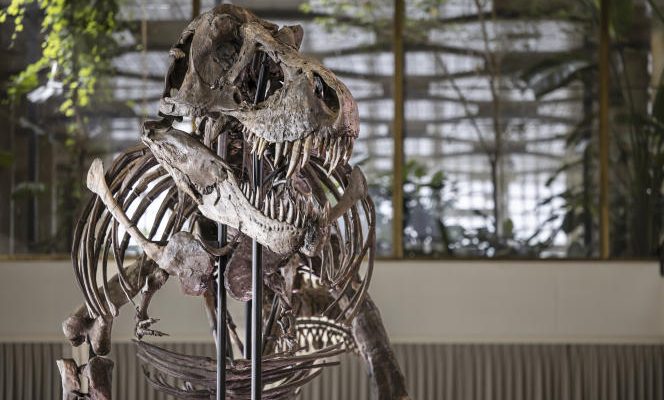Ithe skeleton auctions of dinosaurs are all the rage. On April 18, it will be the turn of Trinity, a “Tyrannosaurus rex” from the Upper Cretaceous of the United States, to go under the hammer of the auctioneer of the auction house Koller, in Zurich, Switzerland. This sale, like the previous ones, provoked critical reactions from paleontologists.
Why not celebrate this event which reflects the public’s interest in dinosaurs and paleontology in general? This is because science hardly benefits from these sales, which concern only a handful of extremely wealthy collectors. Fossils become inaccessible to the academic and museum worlds. The repeated complaint of researchers in the face of these sales can be perceived as a vain claim by scientists withdrawn in their ivory tower, completely detached from the economic realities of a world where everything is sold and bought. But it is far from being the case. Paleontologists indeed obtain some of their objects of study through commercial exchanges.
In the two hundred years that this discipline has existed, many fossils studied by professionals have not been found by them. Fortuitous discoveries or discoveries made during systematic work carried out by amateurs fill many drawers in our museums. Even today, independent fossil researchers donate or sell their discoveries to institutions in Europe and around the world. When this activity is carried out in accordance with local legislation, we see no harm in it.
The contribution of the work of amateurs
The activity of these amateurs complements field research, research that professionals do not always have the opportunity to carry out. It should be noted that excessive protection of fossiliferous zones subject to strong erosion, where the fossils are destroyed if they are not quickly collected when they appear on the surface of the ground, is harmful for paleontology. Far from protecting fossils, excessive protection leads to the destruction of specimens important to science. The lively debates underway around the proposed nature reserve of the Calvados coasts, in Normandy, which would considerably restrict the collection of fossils, are proof of this.
Once a fossil of a dinosaur, or any other organism for that matter, is discovered, the preparatory work to extract it from its gangue – and its mounting – is expert work that is often not conducted within the museums themselves. This work must be remunerated at its fair price, sometimes high. The intervention of sponsors is always welcome! This is the case, for example, of the Club des Mécènes du Paléospace, the museum which presents the fossils of the Black Cows in Villers-sur-Mer (Calvados).
You have 48.22% of this article left to read. The following is for subscribers only.
